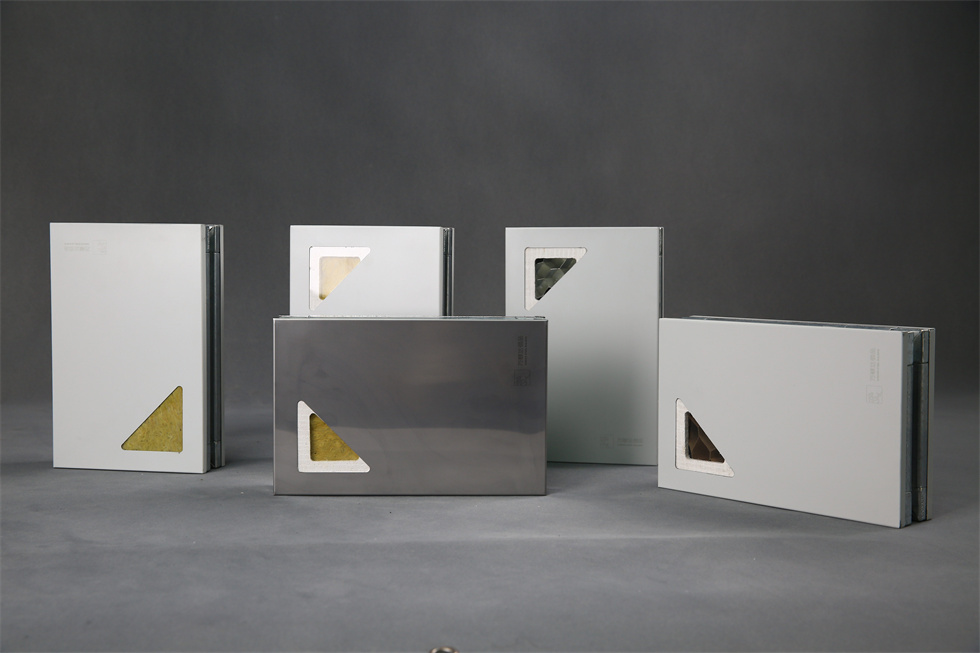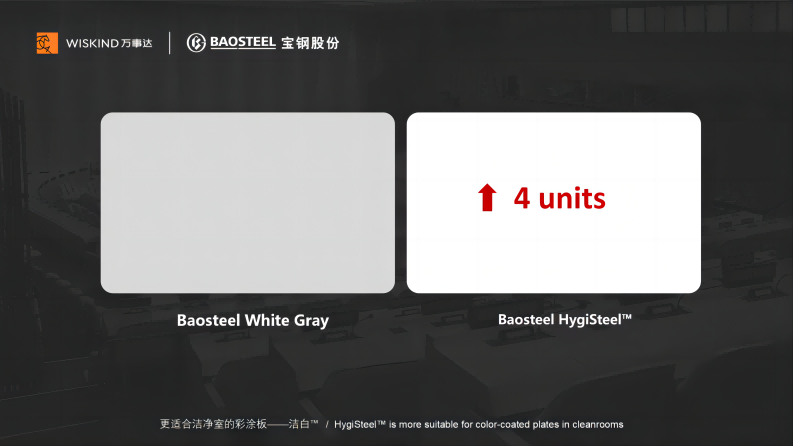We have a passion for unconventional solutions that bring your vision to life.
As the cornerstone of modern industrial production, cleanrooms play a crucial role in determining product yield and reliability in industries such as semiconductor manufacturing, biopharmaceuticals, and precision instruments. Throughout the entire lifecycle of a cleanroom, panels serve as the primary structural enclosure material, with their performance parameters directly influencing operational efficiency and maintenance costs. This article delves into the key factors in cleanroom panel selection and explores the practical value of professional solutions in the industry.

Cleanroom panels must meet multiple physical performance criteria: compressive strength should reach ≥120 kPa to support equipment loads, surface resistance must be controlled between 10^6-10^9Ω for electrostatic dissipation, and antibacterial rates should exceed 99% to prevent microbial growth. For instance, in the case of color steel sandwich panels, the core material density must reach at least 120 kg/m³ to ensure structural stability. Moreover, medical cleanrooms require panels with FDA-certified antibacterial coatings. In terms of dynamic airflow control, high-quality panels must meet the ISO 14644-3 standard, achieving an air leakage rate of ≤0.01%.

The structural integrity of cleanroom panels directly affects their longevity. Experimental data indicate that wall panel systems combining 0.6mm galvanized steel sheets with rock wool cores provide 4.2 times the flexural strength of traditional EPS core materials, ensuring dimensional stability for over 15 years in ISO Class 1 cleanrooms. Wiskind Cleanroom’s modular quick-installation system, featuring factory prefabrication, field splicing and simple module technology, shortens construction time by 40%, making it particularly suitable for rapid deployment in vaccine production facilities.
For maintenance cost control, surface treatment technologies with self-cleaning capabilities can reduce cleaning frequency by 30%. The fluorocarbon coating process, for example, achieves a surface contact angle of 115°, and when combined with automated daily cleaning systems, keeps particulate deposition below 5 μg/cm² per month—far below the GMP standard limit of 20 μg.
The precision of cleanroom panel installation directly affects airflow efficiency. Measurements show that when wall flatness deviations exceed 3mm per meter, local turbulence intensity increases by 15%, causing fluctuations in cleanliness levels. Professional installation teams employ laser positioning and pneumatic compression techniques to control panel misalignment within ±0.5mm, ensuring optimal laminar airflow.
In specialized environments such as biosafety laboratories, panel joints must meet IP54 protection standards. By implementing dual-seal strips and thermal fusion welding techniques, 0.1μm particle penetration is effectively prevented. A genetic sequencing center that adopted this technology increased environmental monitoring compliance rates from 92% to 99.6% while reducing annual maintenance costs by 280,000 RMB.
As a leading provider of cleanroom solutions, Wiskind Cleanroom has established itself as a pioneer in the research, development, and manufacturing of high-performance cleanroom panels. With state-of-the-art production facilities and advanced processing technology, Wiskind Cleanroom ensures strict quality control and precision engineering in every cleanroom panel it produces. Our manufacturing capabilities include automated continuous production lines, high-precision laser cutting, and intelligent coating systems, allowing for consistent product quality, enhanced durability, and compliance with international cleanroom standards.
Among Wiskind Cleanroom’s key innovations is the HygiSteel® cleanroom panel, a cutting-edge solution specifically designed to meet the stringent hygiene and contamination control requirements of pharmaceutical, biotechnology, and food industries. Hygisteel panels incorporate an advanced antibacterial coating that effectively inhibits microbial growth, achieving a >99.9% antibacterial rate. The surface material is resistant to chemical corrosion, allowing for frequent sterilization with disinfectants such as hydrogen peroxide and sodium hypochlorite without degradation.

Through continuous innovation, Wiskind Cleanroom is redefining industry standards for cleanroom panel technology. With the rapid advancements in intelligent manufacturing and precision medicine, cleanroom panels have evolved from basic construction materials into critical components of the production process. When selecting professional solutions, enterprises must comprehensively evaluate material performance, structural design innovation, and installation quality. Leading industry brands are redefining cleanroom environmental control standards through continuous technological advancements, providing foundational support for industrial upgrades in high-end manufacturing. Under stringent production requirements, a scientifically engineered panel selection strategy will be the key to building core competitiveness.

Wiskind Cleanroom specializes in cleanroom enclosure system , ceiling system, cleanroom doors and windows and related product development, manufacturing, sales, consulting and services.